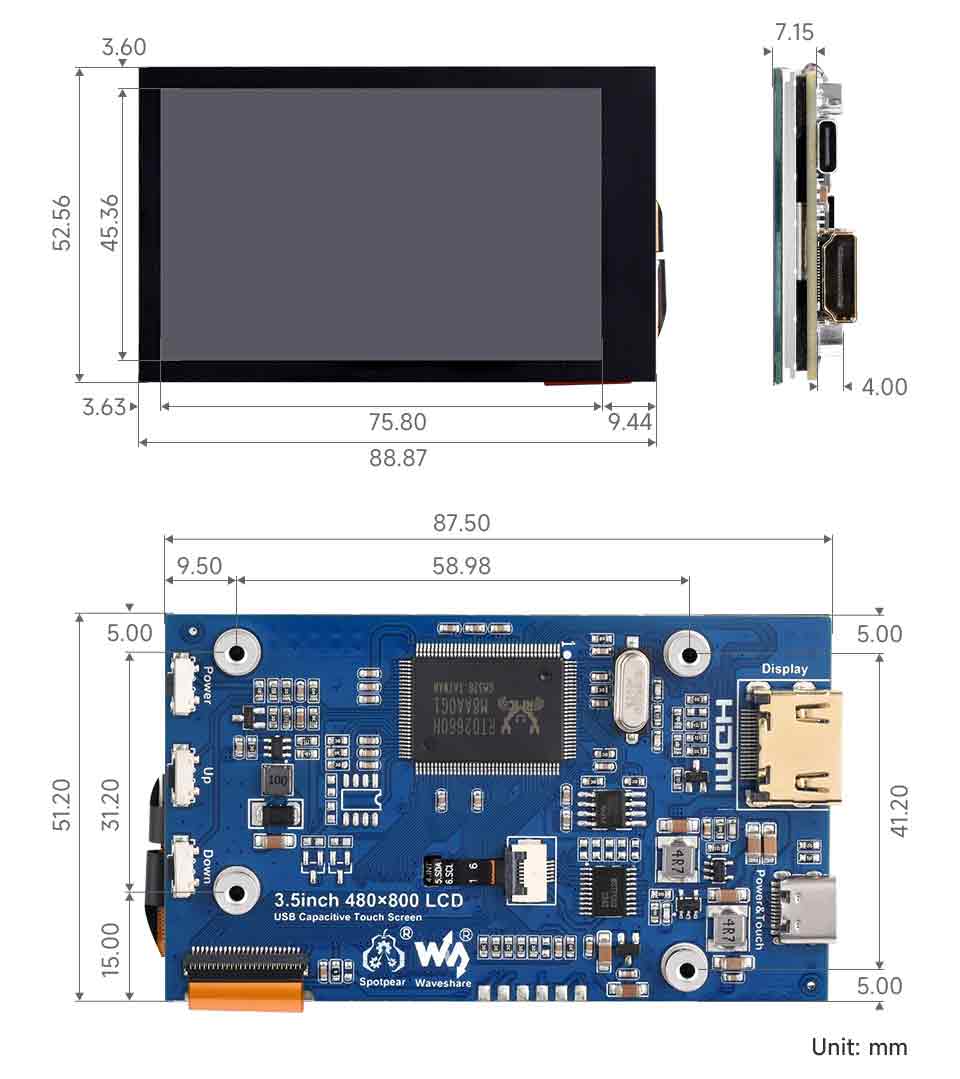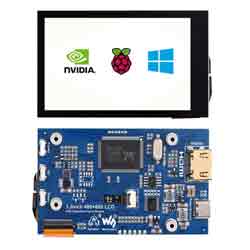- sales/support
Google Chat: zj734465502@gmail.com
- sales
+86-0755-88291180
- sales01
sales@spotpear.com
- sales02
dragon_manager@163.com
- support
tech-support@spotpear.com
- CEO-Complaints
zhoujie@spotpear.com
- sales/support
WhatsApp:13246739196
Raspberry Pi 3.5inch 480x800 LCD User Guide
Introduction
3.5-inch IPS Capacitive Touch LCD Display, 480 × 800, Adjustable Brightness. Support Raspberry Pi and Jetson Nano, and also can be used as a computer monitor.
Feature
- 3.5-inch IPS screen, 480 × 800 hardware resolution.
- Support up to 5-point capacitive touch.
- Supports Raspberry Pi OS / Ubuntu and Kali when used with Raspberry Pi.
- Ubuntu support when used with Jetson Nano.
- Supports Windows 11 / 10 / 8.1 / 8 / 7 when used as a computer monitor.
- Support backlight control, more power saving.
Parameters
| Item | Description | Unit |
|---|---|---|
| Model | 3.5inch 480 × 800 LCD | / |
| Size | 3.5 | Inch |
| Viewing Angle | 170 | Deg |
| Resolution | 480 × 800 | Pixels |
| Outline Dimensions | 88.87 (H) × 52.56 (V) × 7.15 (D) | mm |
| Display Area | 75.80 (H) × 45.36 (V) | mm |
| Pixel Pitch | 0.18 (V) × 0.18 (H) | mm |
| Color Gamut | 70% | NTSC |
| Maxium Brightness | 300 | cd/m² |
| Contrast | 1000:1 | / |
| Backlight Adjustment | Button Dimming | / |
| Refresh Rate | 60 | Hz |
| Display Port | Standard HDMI Port | / |
| Touch Port | 5V USB Touch | / |
| Power Consumption | 2 | Watt |
| Weight | 55 | g |
Electrical Specifications
| Parameter | Minimum | Standard | Maximum | Unit | Note |
|---|---|---|---|---|---|
| Input Voltage | 4.75 | 5.00 | 5.25 | V | Note 1 |
| Input Current | 500 | 500 | TBD | mA | Note 2 |
| Operating Temperature | 0 | 25 | 60 | ℃ | Note 4 |
| Storage Temperature | -10 | 25 | 70 | ℃ | Note 4 |
•Note 1: Input voltage exceeding the maximum value or improper operation may cause permanent damage to the device.
•Note 2: The input current must be ≥500mA, otherwise, it will cause startup failure or abnormal display, and it may cause permanent damage to the device if it is in an abnormal state for a long time.
•Note 3: Please do not store the display in a high-temperature and high-humidity storage environment for a long time. The display must work within the limited value range, otherwise, the display may be damaged.
EDID Timing Parameters
If the system of the main control board can automatically recognize the EDID for display, there is no need to additionally set related timing parameters.
Otherwise, you can refer to the following EDID settings:
| Pixel Clock | H Addressable | H Blanking | V Addressable | V Blanking | H Front Porch | H Sync Width | V Front Porch | V Sync Width | H Image Size | V Image Size | H Border | V Border |
|---|---|---|---|---|---|---|---|---|---|---|---|---|
| 30.60 | 480 | 120 | 800 | 50 | 10 | 10 | 2 | 4 | 480 | 800 | 0 | 0 |
Interface Introduction

User Manual
Working With Raspberry Pi
Hardware Connection
1. Connect the Touch port to the USB port of the Raspberry Pi.
2. Connect the HDMI interface to the Raspberry Pi HDMI interface.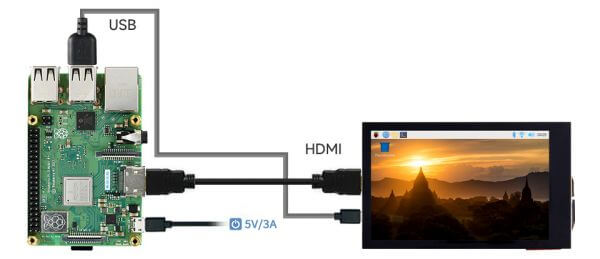
Software Setting
Support Raspberry Pi OS / Ubuntu / Kali and Retropie systems. When the LCD works on systems such as Raspberry Pi, the resolution must be manually set. Otherwise, the display resolution will be incorrect and affect your experience.
1. Please download the latest version of the image from Raspberry Pi official website.
2. Download the compressed file to the PC, and decompress it to get the .img file.
3. Connect the TF card to the PC, and use SDFormatter software to format the TF card.
4. Open the Win32DiskImager software, select the system image prepared in step 1, and click write to burn the system image.
5. After the programming is completed, open the config.txt file in the root directory of the TF card, add the following code at the end of config.txt, save and eject the TF card safely.
hdmi_force_hotplug=1
hdmi_group=2
hdmi_mode=87
hdmi_drive=1
hdmi_cvt 480 800 60 6 0 0 06. Insert the TF card into the Raspberry Pi, power on the Raspberry Pi, and wait for a few seconds to display normally.
Display Rotation
If you're using a Pi4, you can rotate it with:
- 1. Open Screen Configuration.

- 2. Set the rotation as shown below:

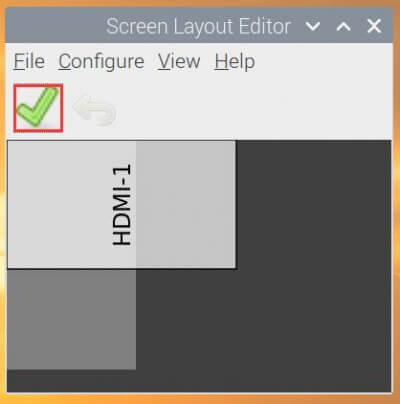
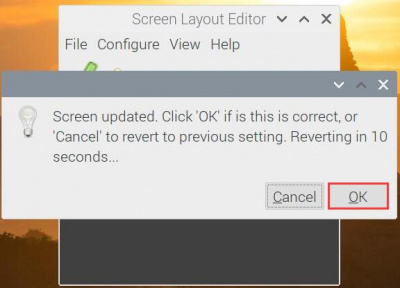
- 3. After rotating and touching, it can be used normally.
If you're using a Pi3+, or older, rotate it via:
- 1. Add statements to the config.txt file (the config file is located in the root directory of the TF card, ie /boot):
display_rotate=1 #1:90;2: 180; 3: 270
- 2. Save and restart the Raspberry Pi:
sudo reboot
Touch Rotation
After display rotation, the touch position is wrong because the touch does not change with the display angle. So you need to modify the touch.
1. Install libinput
sudo apt-get install xserver-xorg-input-libinput
If you are installing an Ubuntu system or a Jetson Nano. The installation command is:
sudo apt install xserver-xorg-input-synaptics
2. Create the xorg.conf.d directory under /etc/X11/ (if the directory already exists, skip to step 3).
sudo mkdir /etc/X11/xorg.conf.d
3. Copy the 40-libinput-conf file to the newly created directory:
sudo cp /usr/share/X11/xorg.conf.d/40-libinput.conf /etc/X11/xorg.conf.d/
4. Edit this file.
sudo nano /etc/X11/xorg.conf.d/40-libinput.conf
Find the part of the touchscreen, add the following statement to it, and save it.
Option "CalibrationMatrix" "0 1 0 -1 0 1 0 0 1"
Position similar to the picture below: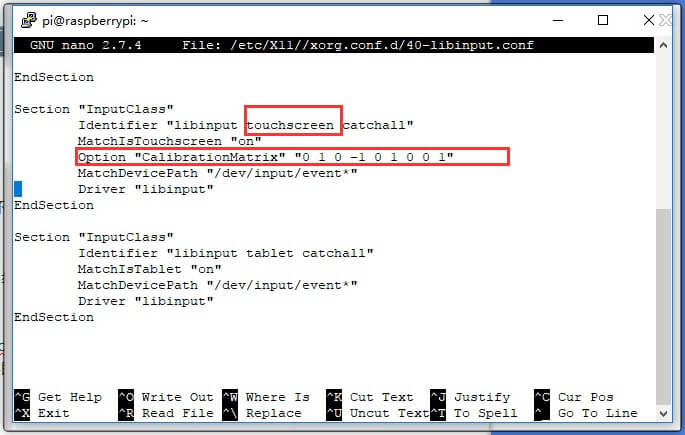
5. Reboot the Raspberry Pi.
sudo reboot
Complete the above steps to perform a 90-degree rotation.
Note:
90-degree rotation: Option "CalibrationMatrix" "0 1 0 -1 0 1 0 0 1"
180-degree rotation: Option "CalibrationMatrix" "-1 0 1 0 -1 1 0 0 1"
270-degree rotation: Option "CalibrationMatrix" "0 -1 1 1 0 0 0 0 1"
Working With PC
Support Windows 11 / 10 / 8.1 / 8 / 7
Steps:
1. Connect the Touch port of the LCD to the USB interface of the PC, and Windows will automatically identify the touch function.
2. Connect the HDMI port of the LCD to the HDMI port of the PC, and Windows will automatically identify the display function.
Note:
- Some PCs do not support plug-and-play HDMI devices, and they can be used normally after restarting the system.
- If the power supply of the USB interface is insufficient, the LCD will flicker. It is recommended to use the host USB3.0 interface.
Windows Touch Calibration
Take Windows 10 as an example:
- 1. Enter the Windows settings of the system, type in the search bar and click "Calibrate the screen for pen or touch input" (as shown in the picture below):
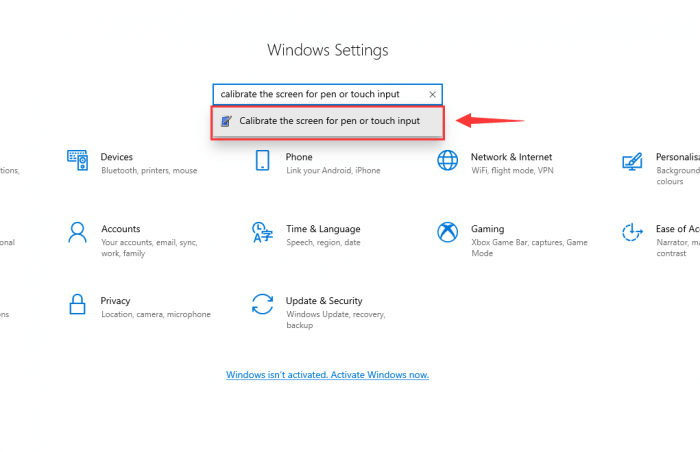
- 2. Click "Setup" in the pop-up "Tablet PC Settings" interface:
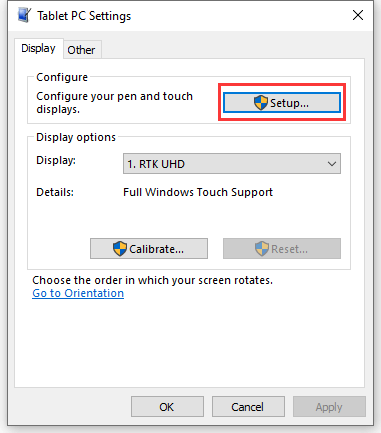
- 3. The following text prompt will appear on the screen. Please tap the touch screen with your finger, and the computer will recognize it as a touch screen.
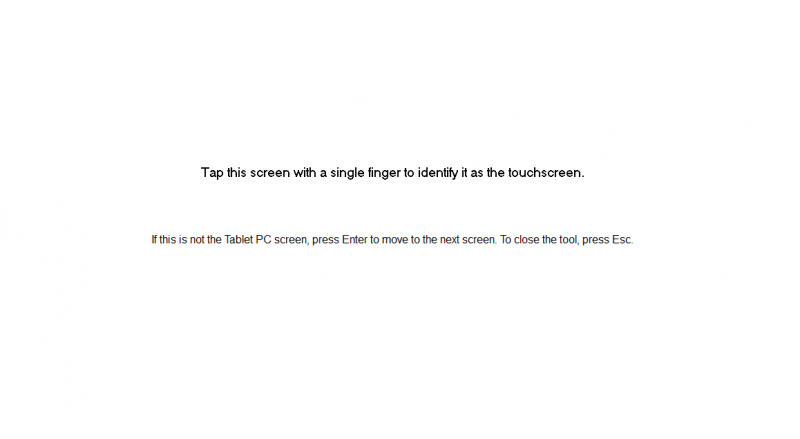
Dimensions
